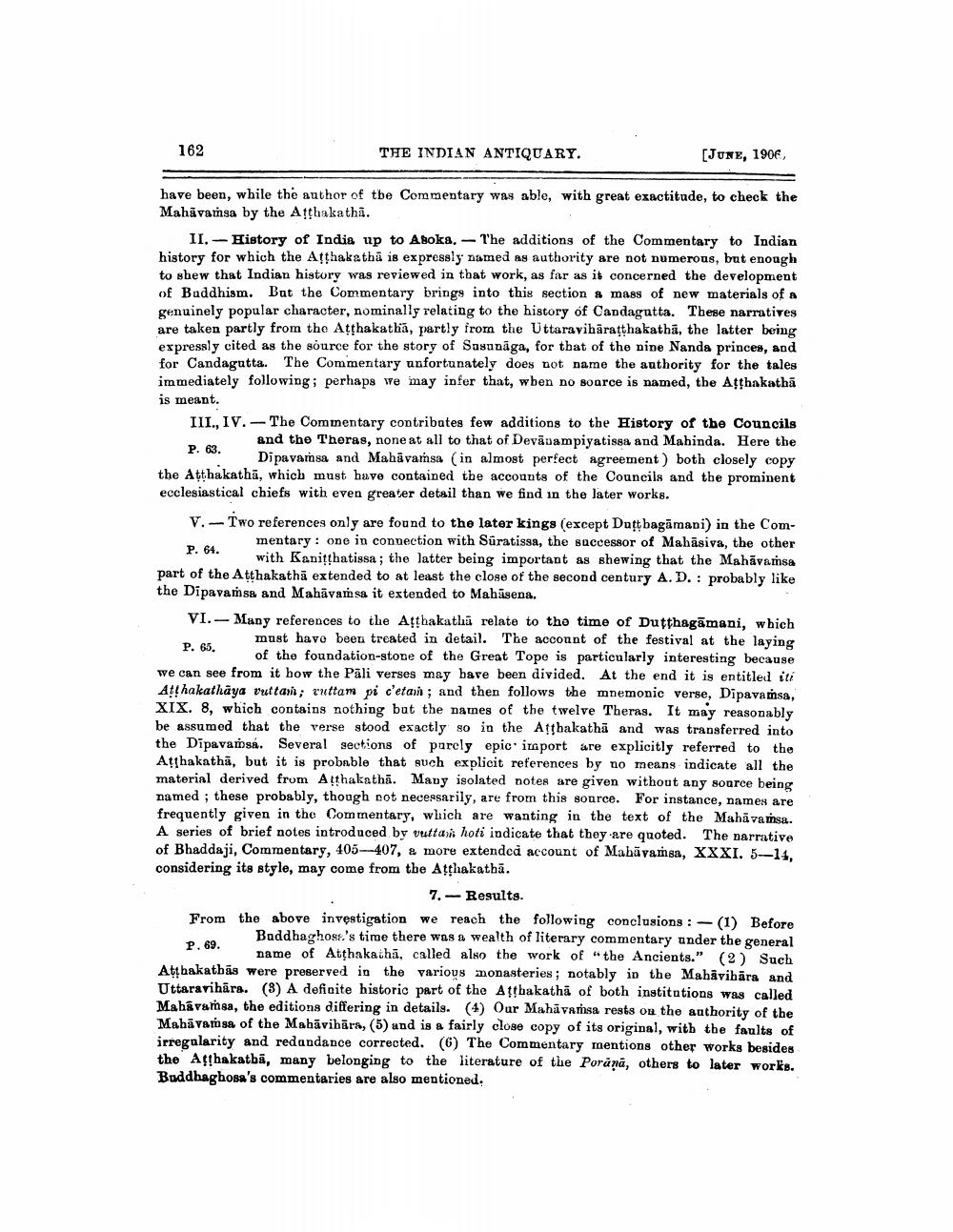________________
162
THE INDIAN ANTIQUARY.
[JUNE, 190€
have been, while the author of tbe Commentary was able, with great exactitude, to check the Mahāvamsa by the Afthakatha.
II. - History of India up to Asoka. - The additions of the Commentary to Indian history for which the Atthakatha is expressly named as authority are not numerous, but enough to shew that Indian history was reviewed in that work, as far as it concerned the development of Buddhism. Bat the Commentary brings into this section & mass of new materials of a genuinely popular character, nominally relating to the history of Candagutta. These narratives are taken partly from the Atthakathā, partly from the Uttaravihäratthakatha, the latter being expressly cited as the source for the story of Sasanāga, for that of the nine Nanda princes, and for Candagutta. The Commentary unfortunately does not name the authority for the tales immediately following; perhaps we may infer that, wben no source is named, the Aţthakathā is meant. III., IV. - The Commentary contributes few additions to the History of the Councils
and the Theras, none at all to that of Devādampiyatissa and Mahinda. Here the
. Dipavamsa and Mahavamsa (in almost perfect agreement) both closely copy the Atthakathā, which must have contained the accounts of the Councils and the prominent ecclesiastical chiefs with even greater detail than we find in the later works.
V.-Two references only are found to the later kings (except Dutt bagāmani) in the Com
mentary: one in connection with Suratissa, the successor of Mahāsiva, the other P. 64.
with Kanithatissa; the latter being important as shewing that the Mahāvarnsa part of the Atthakatha extended to at least the close of the second century A.D. : probably like the Dipavamsa and Mahavamsa it extended to Mahasena. VI.-- Many references to the Atthakatha relate to tho time of Dutthagāmani, which
must havo been treated in detail. The account of the festival at the laying P. 65.
.. of the foundation-stone of the Great Tope is particularly interesting because we can see from it how the Pāli verses may have been divided. At the end it is entitled iti Atthakathaya vrta; ruttam pi c'etan; and then follows the mnemonic verse, Dipavamsa, XIX. 8, which contains nothing but the names of the twelve Theras. It may reasonably be assumed that the verse stood exactly so in the Afthakathi and was transferred into the Dipavamsa. Several sections of parely epic. itaportare explicitly referred to the Atshakatha, but it is probable that such explicit references by no means indicate all the material derived from Atthakathā. Many isolated notes are given without any source being named ; these probably, though not necessarily, are from this source. For instance, names are frequently given in the Commentary, which are wanting in the text of the Mahavamsa. A series of brief notes introduced by vuttai hoti indicate that they are quoted. The narrative of Bhaddaji, Commentary, 405-407, & more extended account of Mahavamsa, XXXI. 5--14, considering its style, may come from the Athakatha.
7.- Results. From the above investigation we reach the following conclusions: -(1) Before
Buddhaghoss.'s time there was a wealth of literary commentary under the general P. 69. name of Atthakatha, called also the work of the Ancients." (2) Such Atthakathäs were preserved in the various monasteries; notably in the Mahavibära and Uttaravihūrs. (8) A definite historic part of the Atthakathā of both institutions was called Mahavamsa, the editions differing in details. (4) Our Mahāvarsa rests on the authority of the Mabavama of the Mabāvihärs, (5) und is a fairly close copy of its original, with the faults of irregularity and redundance corrected. (6) The Commentary mentions other works besides the Aghakatbā, many belonging to the literature of the Porana, others to later works. Buddhaghosa's commentaries are also mentioned.




